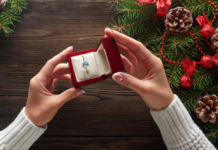
The rise of ethical and sustainable jewelry has captured the attention of conscious consumers, with brands like Lily Arkwright leading the charge in promoting eco-friendly practices in the jewelry industry. Ethical jewelry trends are no longer a niche market; they are becoming a mainstream choice for individuals who prioritize sustainability, transparency, and social responsibility. As a result, jewelry brands must adapt their marketing strategies to meet the demands of today’s informed and conscientious shoppers. From the lab bench where these pieces are crafted to the digital world of social media, ethical jewelry trends are increasingly gaining visibility and importance.
The journey of an ethical jewelry piece begins long before it reaches the shelves or digital platforms. It starts in the lab, where the materials are carefully sourced to ensure that they are conflict-free, sustainable, and ethically mined or lab-grown. Ethical jewelry brands such as Lily Arkwright invest in processes that minimize environmental impact, reduce carbon footprints, and contribute to fair labor practices. The challenge, however, lies in translating these behind-the-scenes efforts into compelling stories that resonate with potential buyers. A piece of jewelry may be beautifully crafted, but it’s the story behind its creation that truly differentiates ethical jewelry from traditional counterparts.
For any jewelry brand that seeks to thrive in today’s market, establishing a strong and authentic narrative is key. One of the most effective ways to do this is through transparent storytelling. Consumers want to know where their products come from, how they’re made, and who is involved in the process. Ethical jewelry brands can leverage this transparency to build trust and foster deeper connections with their customers. Sharing the journey of the materials, from sourcing to crafting, offers a glimpse into the brand’s commitment to sustainability and ethics.
With the rise of digital marketing and social media platforms, ethical jewelry brands have an unprecedented opportunity to connect directly with their audience. Social media, in particular, has become a powerful tool for telling these stories. Platforms like Instagram, Pinterest, and Facebook allow brands to showcase their designs, share their ethical practices, and engage with customers on a personal level. The visual nature of these platforms is ideal for showcasing the beauty of ethical jewelry while also highlighting its values.
Influencer marketing has also become an essential component of promoting ethical jewelry trends. Consumers often trust influencers and content creators who align with their values, and by partnering with the right voices, jewelry brands can expand their reach and influence. Influencers who champion sustainability and ethical practices can help reinforce the message that conscious consumerism is not only important but also stylish. For example, when a well-known influencer features a piece from Lily Arkwright, it not only demonstrates the beauty of the jewelry but also underscores the importance of supporting ethical brands.
Content creation is another vital part of an effective social media strategy. Brands should aim to produce engaging content that educates consumers about the importance of ethical practices in jewelry production. Blog posts, videos, and infographics that highlight the benefits of lab-grown diamonds or recycled precious metals can go a long way in informing potential buyers. Educational content helps demystify the ethical jewelry process and encourages more consumers to make conscious purchasing decisions.
Moreover, engaging with the community and listening to consumer feedback is crucial in the digital age. Social media is not just about pushing out messages; it’s about creating a dialogue. Brands that actively engage with their followers by responding to comments, sharing customer stories, and asking for feedback foster a sense of community. This engagement can also lead to valuable insights into what consumers are looking for, allowing brands to refine their offerings and marketing approaches.
Sustainability certifications and partnerships with eco-conscious organizations can further strengthen a brand’s credibility in the ethical jewelry space. Certifications from organizations like Fairmined or the Responsible Jewelry Council offer external validation of a brand’s ethical practices, which can be a persuasive selling point for consumers who want to make sure their purchases align with their values.
The future of ethical jewelry marketing will continue to evolve, with an increasing emphasis on digital storytelling, community engagement, and transparency. As more brands, like Lily Arkwright, embrace the ethical and sustainable approach, consumers will have greater access to information and options that allow them to make purchasing decisions with a conscience. From the lab bench to social media, ethical jewelry brands have the power to shape the future of the industry by putting purpose and values at the heart of their marketing strategies.




















